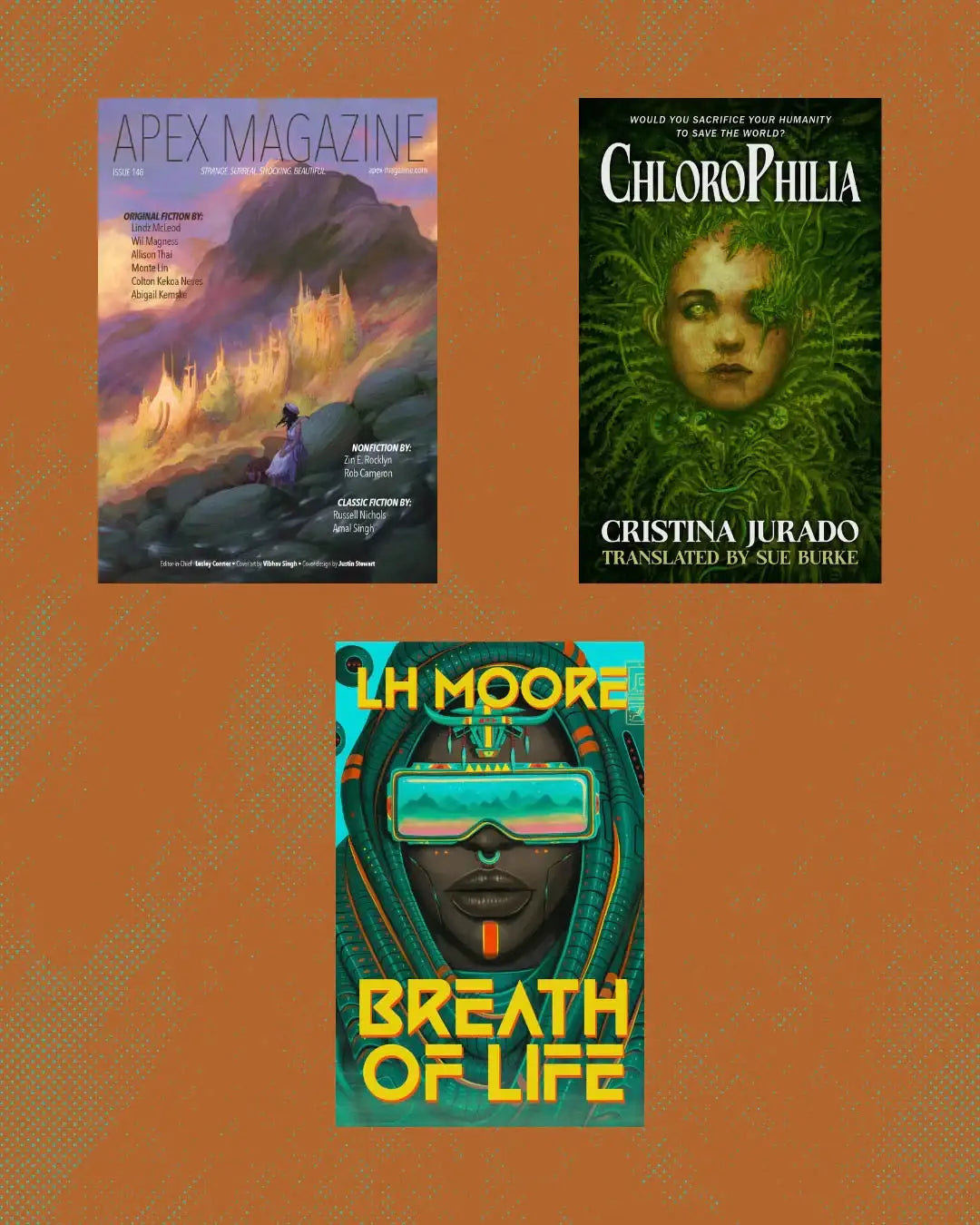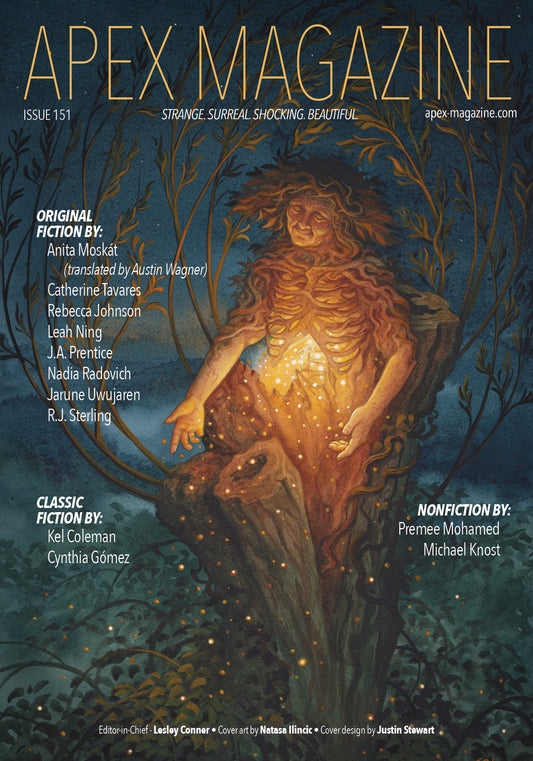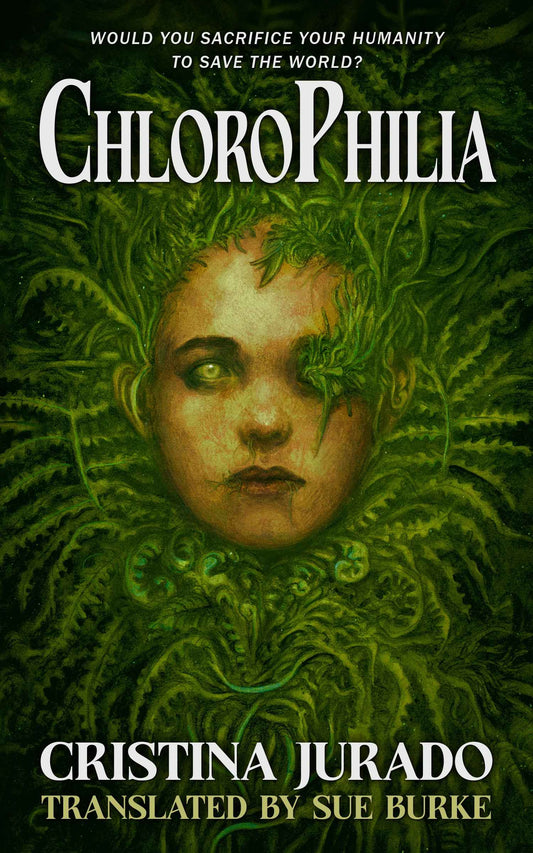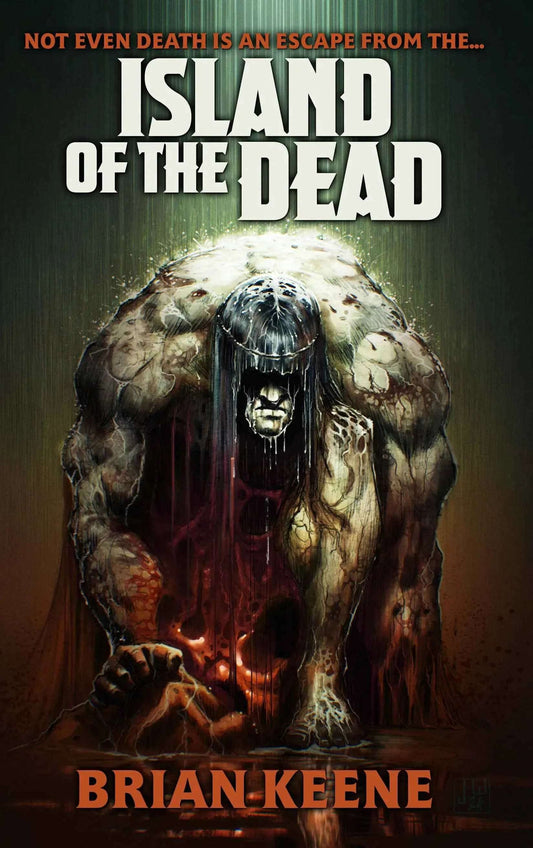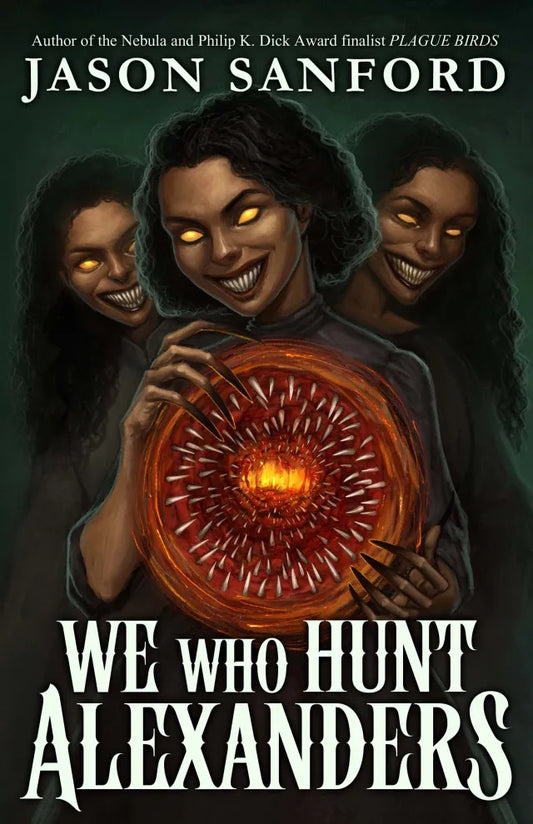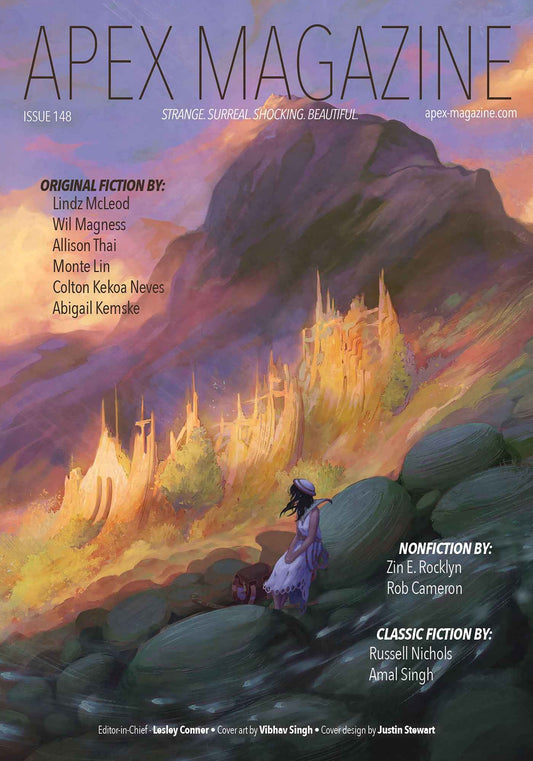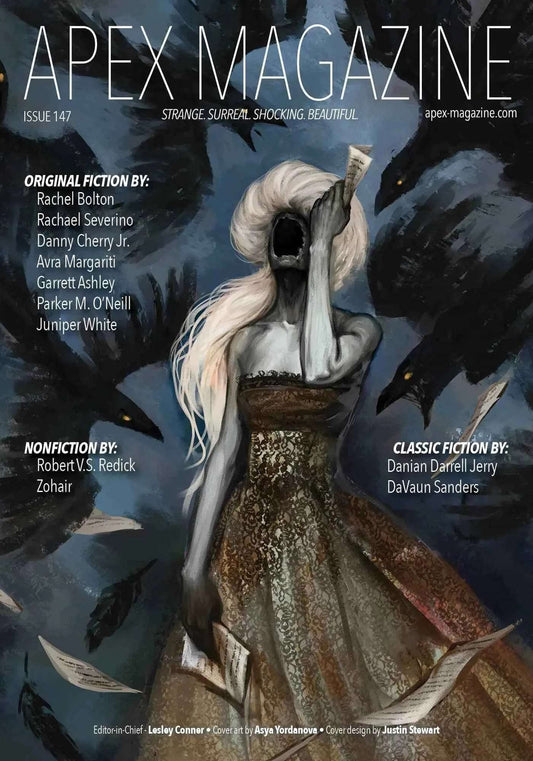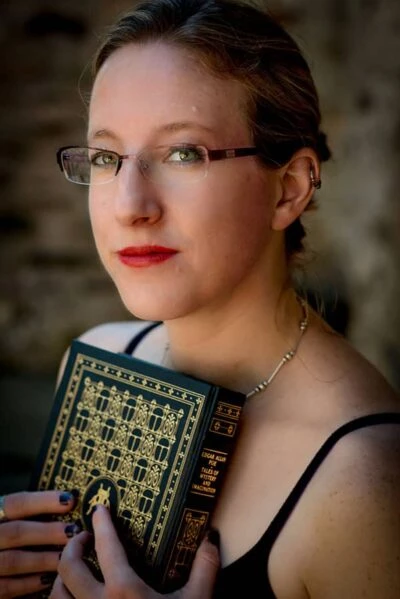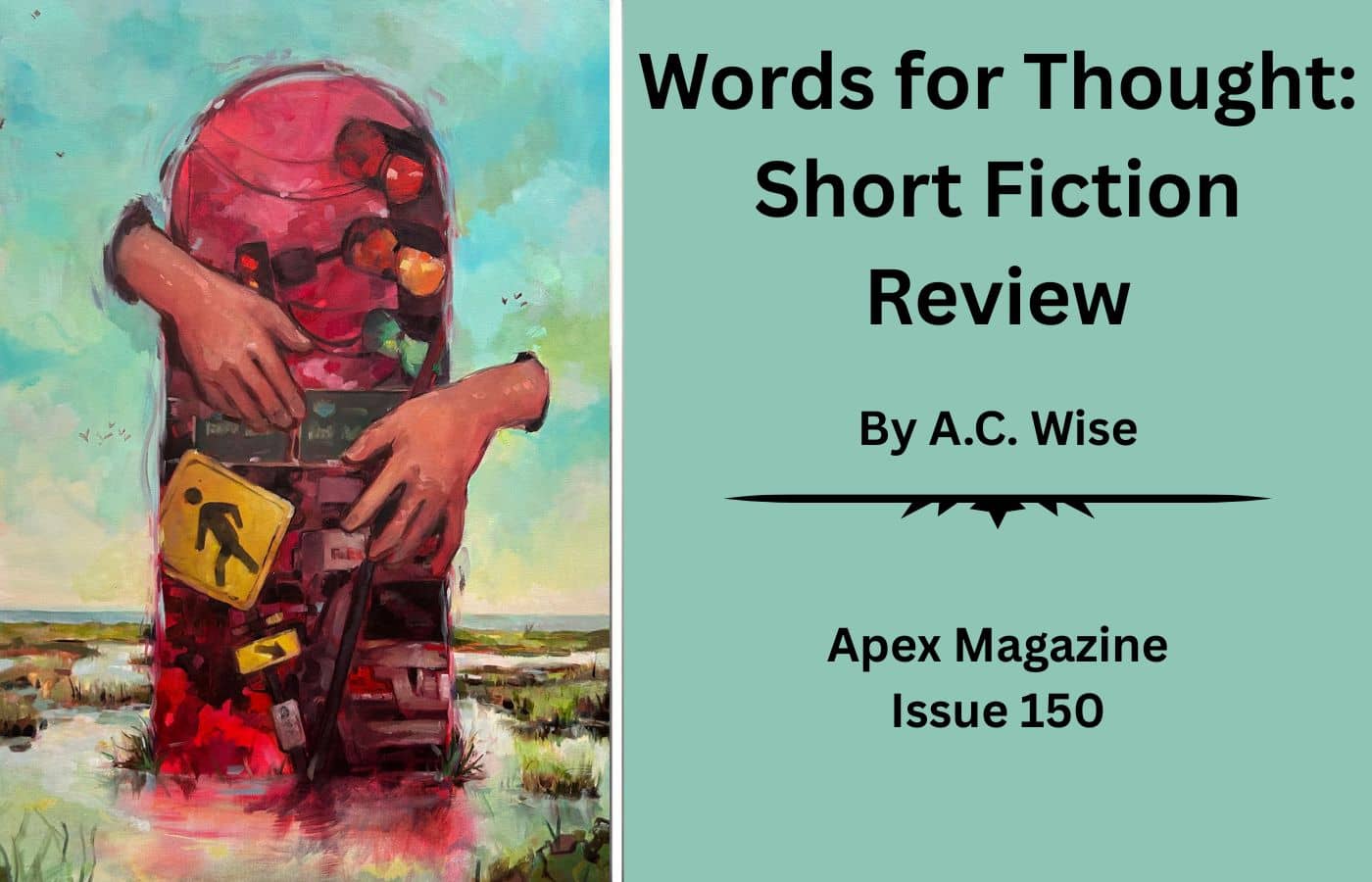
Welcome to another Words for Thought. This time around, I’m looking at uneasy stories, the kind that leave you with the creeping feeling of something unsettling happening just off the page. Some of the most effective horror, to my mind, is when very little that is overtly terrible is shown and the author leaves the reader to fill in the gaps based on hints and suggestions. As always, there are spoilers ahead, so proceed with caution.
“Landline” by Kelly Robson, published in Reactor, is a tense story likely to hit extra hard for anyone who is a parent or a guardian to a young child. Amanda is a teacher, chaperoning a school trip, who gets a call from her young son while she’s at the airport. Liam repeatedly tells her that it’s dark in the house, he’s scared, and that his father is gone, prompting Amanda to rush home when she can’t reach her husband.
“No. Liam is all alone. My son. He’s just six. My husband has disappeared. I’m at the Edmonton airport. There’s nothing I can do.”
It’s a simple premise, but a terrifying one—the idea of knowing someone you love is in danger and not being able to do anything about it. Robson explored a similar concept in her story “Median,” which was also published at Reactor, however the protagonist in that story was powerless to help strangers, whereas the danger for this protagonist is much more personal.
As the story unfolds, Robson increasingly drops hints that more than just the obvious is wrong. When the RCMP arrives to investigate the house while Amanda is on her way home, they report finding no one there—the house is empty. Meanwhile, there’s the suggestion that Amanda and her husband have a troubled relationship at best, and at worst, an abusive one. The story ends with a hint of the supernatural, as if the mundane horror of the situation were not enough, but again, it’s left to the reader to fill in the blanks as to what exactly is going on.
“Old Wells” by Thomas Ha, published in Three-Lobed Burning Eye in March 2025, also features a young boy left largely on his own, and hints at parental abuse. The first-person narrator spends his summer days wandering the land around his house, searching for old, abandoned wells.
There was the Red Rock Well near the west slope. The Broken Lip by the steep shoulder. Double-Bucket and Tumbledowner, almost near Dead Man’s Peak. I must have come across over sixty wells in my summertime searches. So many wells, for some reason built and abandoned. Little circles of sky, with an outline of a boy in them.
Raise your right hand, I would holler.
Raise your right hand, the boy would grin.
The narrator talks to the wells in what at first might be seen as an innocent game of make-believe, but it becomes increasingly clear that something in the wells is in fact answering him. When the shadowy thing emerges from the well, the narrator is more than happy to direct it to his home and let it take his place, freeing himself from his unhappy home life. As with Robson’s story, the violence is never made explicit, but it haunts the margins of the piece.
There are some nice inversions of trickster and doppelganger tropes at play here too. The shadow creature in the well believes it is tricking the protagonist into revealing information about himself and where he lives, but in fact, that information is offered willingly. Similarly, where in many stories the idea of the doppelganger replacing the protagonist would be the primary source of horror, here it is beneficial for the main character, freeing him from a horrible situation.
“St. Dymphna’s School for Borderland Girls” by Jocelyn Szczepaniak-Gillece, published in Weird Horror #10, is a sensual and eerie story about girls at a religious boarding school who begin licking a mysterious, blood-like substance from the walls at night and falling into ecstatic trances.
Michelle knelt in the moonlight, knees and face right up against the wall. The back of her cotton nightgown was soaked in sweat. Her head moved up and down rhythmically. Her hands splayed out onto the wall, keeping her upright, as her head bobbed.
Alma witnesses her roommate succumbing to the strange malady, and it spreads from there, the girls becoming more beautiful in Alma's eyes as they fall to temptation. The sisters who run the school disappear as they venture out to seek help, then the tranced girls vanish as well, until only Alma remains.
There’s more suggestiveness here than hints at violence, but there is a sense of threat as well. The girls vanishing might be a good thing, a bad thing, or a neutral thing; the ultimate results of licking the walls and falling into a trance is never seen on the page. As with classic horror novels like Dracula and Carmilla, sexuality and horror are bound closely together here, and perhaps even the horror of sexuality, depending on your perspective. Szczepaniak-Gillece effectively explores themes of voyeurism, temptation, and blood as part of a sacrament and something profane at the same time. The story can be read as a vampire story, a coming-of-age story, or simply weird horror, but however it’s read, it is effective and evocative.
“The Many Sins of Clara Greenstone” by Hailey Piper, is an original novelette included in the author’s upcoming collection, Teenage Girls Can Be Demons, which will be published by Titan Books in September 2025. I don’t normally include forthcoming stories in this column, however Piper’s story resonates perfect with Szczepaniak-Gillece’s story, and I couldn’t resist including it. The story is narrated in the first person by Colleen, relating how a strange new girl comes to live at St. Mary’s Home for Girls and the chaos that ensues from her arrival.
Clara came to St. Mary’s Home for Girls on the first day of spring that year. There was nothing much special to her at first glance, wearing an ill-fitting yellow dress, her secrets hidden under the hem.
The violence is more overt here than in some of the other stories, as the nuns dole out beatings, lock girls in a narrow closet, and leave them to the mercies of the attic. There’s implied horror as well with rumors of a monster in the attic that eats girls and rumors of one of the nuns murdering a former resident. It becomes increasingly obvious as the story goes on that Clara is not exactly human, but what she is precisely is never named. She’s a fae and trickster-like figure, but she could also be something demonic, though most of her retaliation against the sisters is in the form of pranks and inspiring the story’s narrator to be brave in the face of their punishments, thereby taking away the power of fear from the sisters.
“The Charcoal Sovereign” by Steve Toase, published in Bourbon Penn 35 hints at cosmic horror, while exploring the idea of artistic obsession. Two art students rent a house together, and one discovers a mysterious journal in the attic, leading him to begin experimenting with charcoal.
Over the next couple of weeks we didn’t see much of each other. Not unusual in itself. We often kept different hours when we buried ourselves in projects. Jamie was a night owl, his waking hours shifting around the clock with his latest obsession. I didn’t worry. I didn’t worry until I started seeing the black smudges around the house.
What begins as trying out a new artistic medium quickly descends into something darker, as Jamie sets small fires in his room in order to create charcoal for his work. The fires escalate, as Jamie first burns bones purchased from the butcher, then burns the skin off his fingers to char his own bones. As with Ha’s story, Toase also flips around some genre expectations here. Rather than watching powerlessly as his roommate becomes a figure of horror, the narrator realizes he can exploit his friend’s obsession. He allows Jamie’s mania to continue, creating an endless stream of artwork he can sell while reaping the profit for himself. With only second-hand exposure to the Charcoal Sovereign, the narrator decides that his roommate is but a herald for the true horror to come—a role he will fulfill himself.
